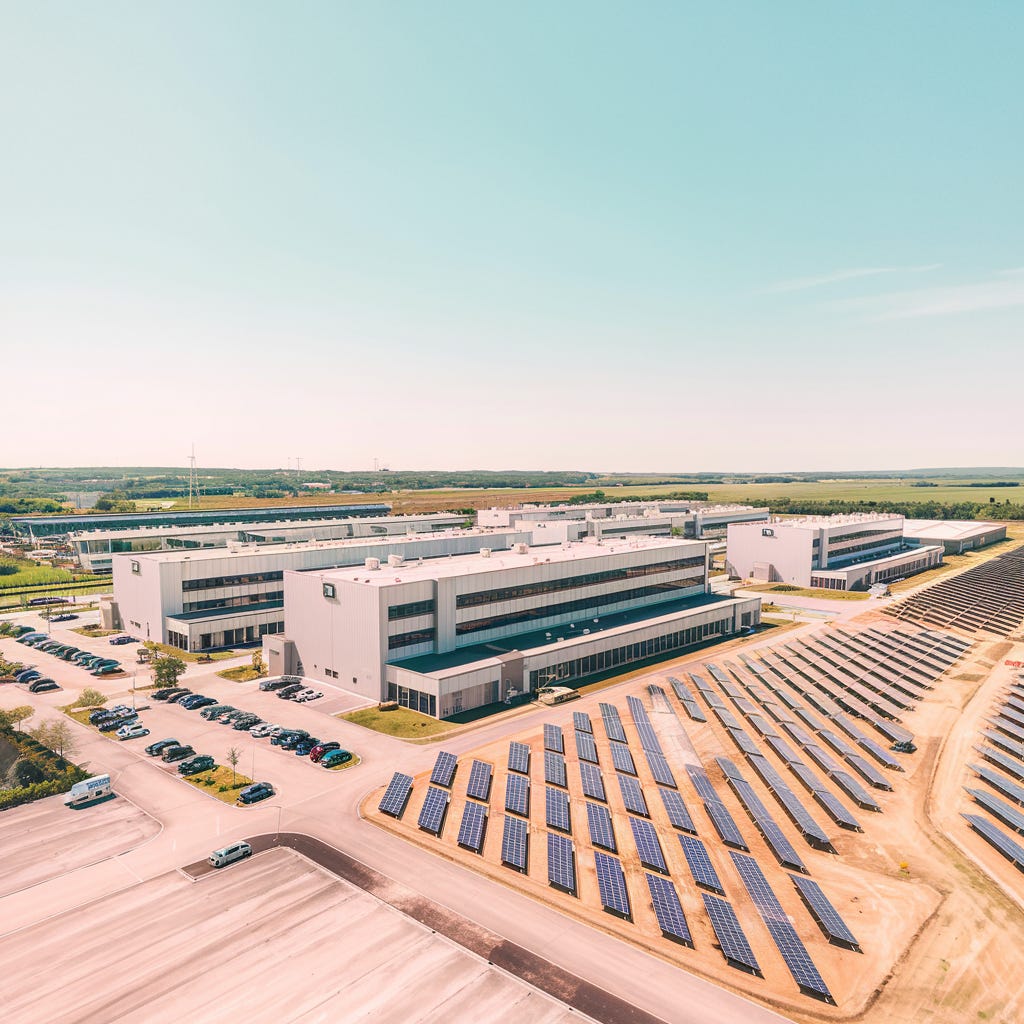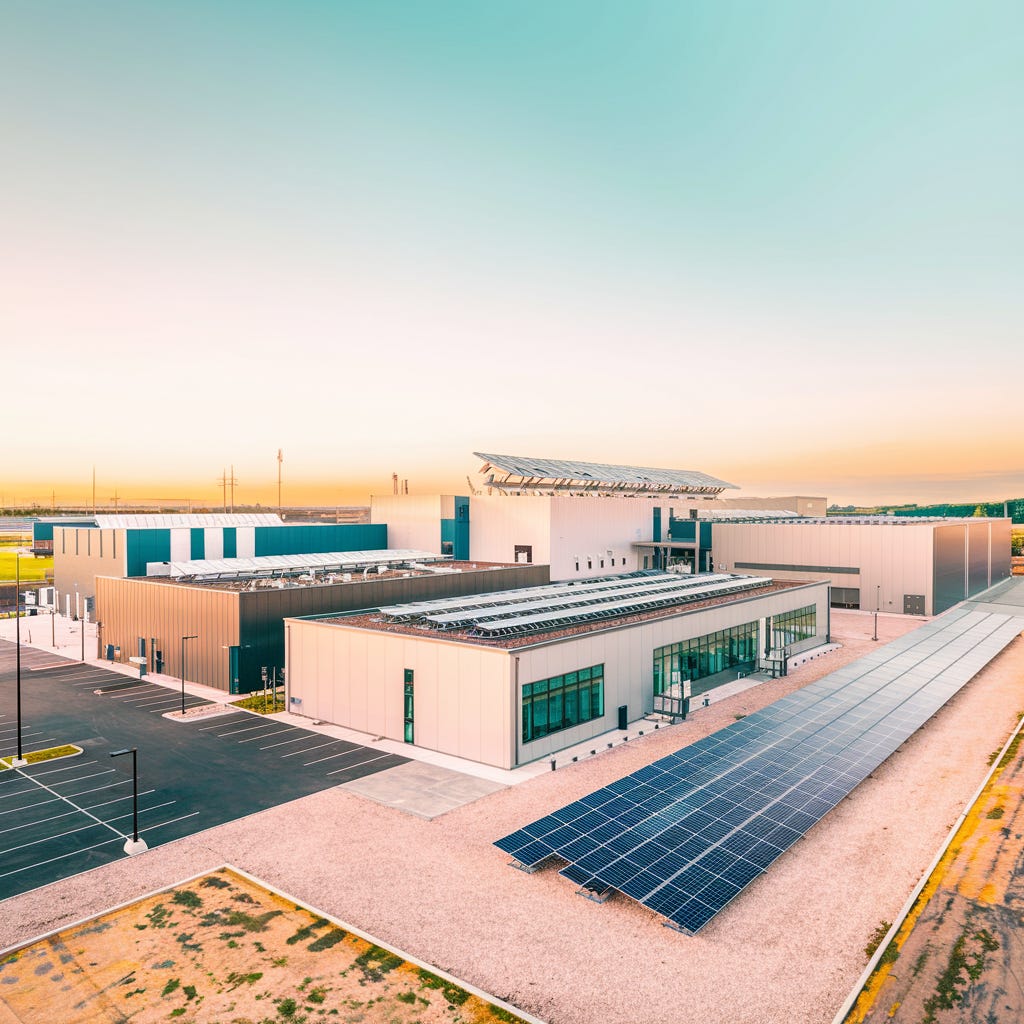📍Don't Miss an Article: Subscribe to the Global Data Center Hub newsletter from Obinna Isiadinso.
As environmental considerations reshape debt markets, data center financing is undergoing fundamental changes. According to the Climate Bonds Initiative, sustainable debt issuance reached $1.1 trillion globally in 2023, reflecting increasing demand for green infrastructure investments.
This shift coincides with mounting pressure to reduce data center carbon footprints and improve energy efficiency. For operators and investors, understanding these emerging debt instruments has become essential for optimizing both capital costs and environmental performance. The intersection of sustainable finance and data center infrastructure creates opportunities to align operational improvements with advantageous borrowing terms.
Traditional to Green: The Evolution of Data Center Capital
Bank loans and syndicated facilities remain core financing tools for data centers, offering established processes and broad market acceptance. These traditional structures typically feature 5-7 year terms with spreads of SOFR plus 200-400 basis points, according to Fitch Ratings' 2023 Infrastructure Report.
While proven and accessible, these instruments often lack mechanisms to recognize and reward environmental performance improvements.
Asset-backed financing provides additional flexibility through securitization of data center assets and revenue streams. However, traditional structures typically focus on conventional metrics like occupancy rates and cash flows, without incorporating sustainability considerations.
Recent market data from Moody's indicates traditional financing costs for data centers have increased by 15-20% since 2022, highlighting the growing importance of exploring alternative funding sources.
ESG-Linked Financing: New Options for Data Center Growth
The transition toward ESG-focused financing reflects both market demand and regulatory pressure. Institutional investors increasingly require demonstrated ESG compliance, while governments worldwide implement frameworks promoting green finance.
According to Moody's ESG Solutions, facilities with strong environmental metrics achieve 15-25 basis point advantages in pricing.
New financing instruments include:
Green Bonds: The International Capital Market Association reports data center-specific green bonds reached $8.7 billion in 2023, with 2.5x average oversubscription rates. These instruments dedicate proceeds to environmental projects while providing access to sustainability-focused investors.
Sustainability-Linked Loans: These facilities link interest rates to environmental performance metrics, with typical margin adjustments of 5-10 basis points based on achievement of sustainability targets.
Structured Finance Options: According to S&P Global's 2023 Infrastructure Finance Review, green asset-backed securities for data centers achieved 20% higher subscription rates compared to conventional ABS offerings. These instruments package green data center assets and cash flows into securities that appeal to ESG-focused institutional investors.
Recent market activity demonstrates growing adoption:
STACK Infrastructure secured $3 billion in green financing for sustainable campus development across Virginia, Arizona, and Georgia, focusing on water conservation and energy efficiency improvements.
Equinix issued €1.15 billion in green bonds, bringing their total sustainable debt to $6.9 billion, with 97% of facilities now powered by renewable energy.
Vantage Data Centers obtained a $3 billion green loan supporting 1.4GW IT capacity expansion across North American greenfield sites.
Strategic Benefits of Sustainable Finance
Research from McKinsey quantifies several key advantages of sustainable financing for data centers. Organizations implementing comprehensive ESG programs report:
Operational cost reductions averaging 8-12% through improved energy efficiency and resource management. A 2023 study of 50 major data centers found those with green financing commitments achieved 15% lower energy costs compared to peers.
Enhanced market positioning and customer acquisition. According to Gartner, 73% of enterprise customers now consider environmental performance in data center selection, with sustainable facilities commanding 5-10% premium pricing.
Improved investor relations and capital access. Morgan Stanley's 2023 Infrastructure Investment Survey indicates 82% of institutional investors prioritize ESG performance in data center investments, with green-certified facilities attracting 2.3x more investor inquiries.
ESG Criteria Evaluation Framework
Successful implementation of sustainable financing requires systematic evaluation against established ESG criteria. Organizations must assess multiple factors, including ESG scoring requirements, operational sustainability alignment, and financial implications of green certifications.
The evaluation process encompasses both quantitative and qualitative methodologies for measuring environmental impact.
Carbon emissions tracking requires particular attention. The Science Based Targets initiative outlines three critical scopes:
Scope 1: Direct emissions from owned or controlled sources, including backup generators and refrigerants. Leading operators target 50% reduction by 2030.
Scope 2: Indirect emissions from purchased electricity. Best practices include 100% renewable energy procurement through power purchase agreements or renewable energy credits.
Scope 3: Value chain emissions, including construction, equipment manufacturing, and end-of-life disposal. Advanced programs target 30% reduction across the supply chain by 2030.
The green bond certification process follows a structured pathway. Organizations first define eligible projects and establish clear ESG metrics. Third-party verification provides credibility to the certification.
Ongoing transparent reporting maintains compliance and investor confidence. Performance metrics focus on key environmental indicators. The Uptime Institute's 2023 data shows industry leaders target PUE below the 1.55 average.
Scala Data Centers exemplifies effective framework implementation through their R$ 2 billion green debenture issuance. The company established ambitious targets including PUE below 1.40 and 100% renewable energy commitment.
Their comprehensive approach to green building certifications attracted significant international interest, with 45% international participation compared to 15% for conventional issues.
Optimizing Green Debt: Key Strategies for Data Centers
Sustainable financing success requires careful balance of multiple objectives. Organizations must integrate cost-effectiveness with ESG compliance while maintaining flexibility for evolving environmental standards.
Robust monitoring and reporting mechanisms provide essential oversight. Ernst & Young's Infrastructure Advisory Practice data indicates typical implementation costs include initial setup at 0.4-0.6% of facility value, annual monitoring at 0.2-0.3%, and ongoing reporting at 0.15-0.25%.
Government incentives can significantly enhance returns. The U.S. Department of Energy's Better Buildings Initiative offers technical assistance and financing support for energy efficiency improvements. Singapore's Green Mark Scheme offers grants covering up to 50% of certification costs for sustainable data centers.
Managing Green Finance: From Strategy to Execution
Data center operators face several significant challenges in implementing sustainable financing. Regulatory requirements for green bonds and sustainability-linked loans vary by jurisdiction and continue evolving.
Meeting ESG certification standards demands substantial upfront investment in infrastructure and monitoring capabilities. The International Capital Market Association highlights significant regional variations, with sustainable finance adoption rates ranging from 15% to 45% across major markets.
Successful organizations employ targeted mitigation strategies.
Engagement of specialized sustainable finance advisors reduces certification timelines by 40% on average, according to KPMG's 2023 Green Finance Advisory Report.
Implementation of advanced monitoring technologies, including AI-driven energy management systems and blockchain-based carbon tracking, improves reporting accuracy by 25-35% while reducing compliance costs.
Collaboration with green investment funds provides additional advantages. According to Preqin, specialized infrastructure funds managing over $100 billion in sustainable data center assets offer technical expertise and preferential financing terms. These partnerships often include:
Access to established ESG frameworks and reporting templates
Technical support for certification processes
Market intelligence on emerging sustainable finance opportunities
Introductions to potential co-investors and strategic partners
What's Next for Data Center Sustainable Finance?
The sustainable data center finance market shows strong signs of continued maturation. The Science Based Targets initiative reports significant progress, with 60% of data center operators now maintaining verified emissions reduction targets, up from 45% in 2022.
Technological advances in monitoring and verification systems are reducing compliance costs. Early adopters of machine learning and blockchain solutions report 20-30% efficiency gains in ESG performance tracking.
European markets continue to lead with established taxonomy regulations, while other regions rapidly develop their frameworks. Organizations that develop comprehensive environmental monitoring and reporting capabilities position themselves advantageously.
The integration of sustainable finance and data center operations represents a fundamental shift in infrastructure investment. Success requires careful attention to emerging standards, strategic deployment of monitoring technologies, and systematic engagement with specialized partners.
Organizations that effectively navigate this transition position themselves for both environmental and financial success in an increasingly sustainability-focused market.
♻️ Repost this to help your network understand the latest trends in data center debt financings.
IF YOU ENJOYED THIS ARTICLE AND WANT MORE CONTENT LIKE THIS:
Subscribe to this newsletter to get notified when a new issue comes out (bi-weekly).
You can also connect with Obinna Isiadinso on Linkedin, Twitter, and YouTube.




